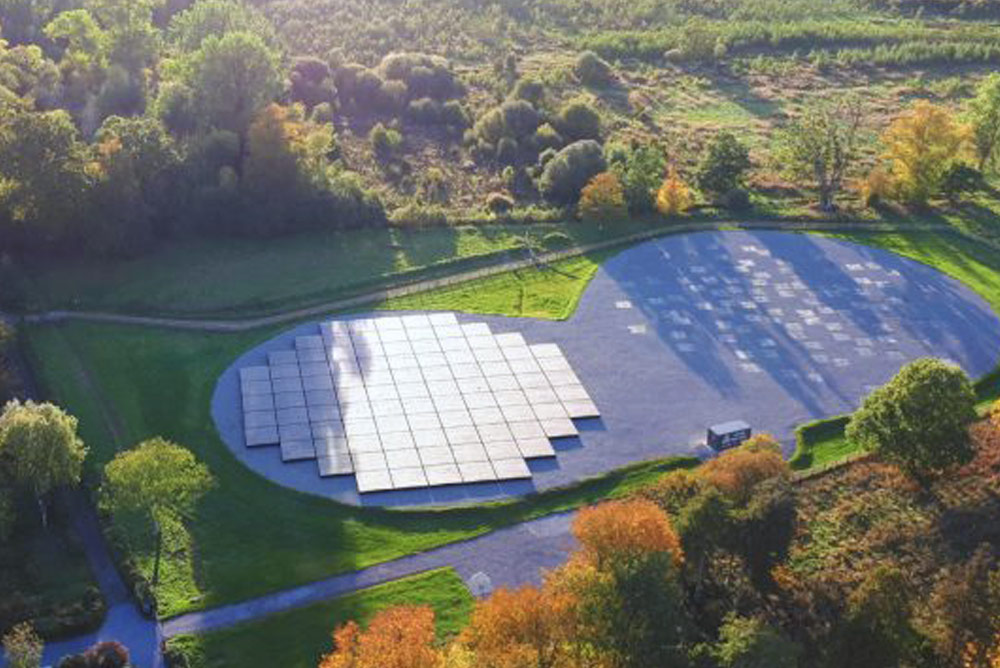I-Lofar
LOFAR is the low frequency array of telescopes that spans almost 2000km from Ireland to Poland. They study the universe using low radio frequencies, and because there’s so many high quality telescopes they are doing so in unprecedented detail. It is the first large radio telescope system, with a lot of low-cost telescopes rather than a few high-cost and big telescopes. Some of the main advantages of this are being able to point in a few directions at the same time, pointing electrically so there is no need for moving parts, and the ability to rapidly switch between stations.
I-LOFAR is the 12th european edition to this network, located in Birr Castle. There are 38 stations in the Netherlands along with a further 14 in countries such as Germany, France, Sweden, the United Kingdom, Poland, Ireland, and Latvia. Another is to be built in Italy in the near future.
Scientists in LOFAR work on a few specific scientific KSPs, or Key Science Points, each with its own specific theme. This is to make sure that they are focused on researching the most important questions in astronomy and astrophysics; Where do we come from? Why are we here? There is such a broad range of possibilities in astronomy that the core points have to be boiled down.
One interesting KSP is Deep extragalactic surveys, where the low radio frequencies are used to try observing everything in the northern sky. 30 square degrees of the sky are observed each day using high band antennas. Related to this, another intriguing KSP is Ultra-high energy cosmic rays, where pulses of gamma rays and other high-energy photons are observed. It is widely thought that these pulses of energy come from black holes – specifically the active ones in the centres of galaxies. These supermassive black holes swallow and eject large streams of matter from its volatile gravitational pull. The matter ejected is close to the speed of light, so it is accelerated from other galaxies to the Milky Way. This can give us invaluable data on what’s happening in other galaxies.
I-LOFAR is based in Birr Castle, also home to the Leviathan of Parsonstown which was the world’s biggest telescope for over 70 years (1845 to 1917). Built by William Parsons, the 3rd Earl of Rosse, it was arguably one of the most important scientific advancements of its time and its reconstruction in the 1990s was helped by Mary Rosse, William’s wife and a pioneering photographer. As the current biggest radio telescope system, it is fitting that a part of LOFAR also resides with such a rich part of Irish and astronomical history.
The construction of I-LOFAR began in 2010, with the small RSTO (Rosse Solar Terrestrial Observatory) which determined Birr Castle to be the most ideal spot in Ireland to build I-LOFAR due to the low radio interference. A test array of 4 antennas was then installed in 2013, and after the success of that the Offaly County Council were given planning permission for the I-LOFAR telescope. Finally, on the 27th July 2017, the telescope saw first light and officially became a part of the LOFAR network.
As well as being a part of the groundbreaking research the LOFAR network provides, the I-LOFAR provides workshops for students and teachers to encourage the next generation of scientists. They help build more connections between schools and universities, both inspiring students to pursue STEM careers and giving them the connections they need to excel in them. With Ireland’s rich history in astronomy and astronomy likewise being an excellent introduction to STEM careers, the I-LOFAR is an excellent teaching point in schools across Ireland.



Hi, this is a comment.
To get started with moderating, editing, and deleting comments, please visit the Comments screen in the dashboard.
Commenter avatars come from Gravatar.